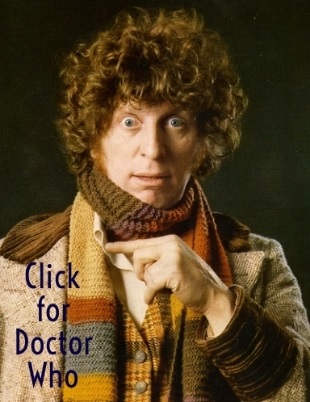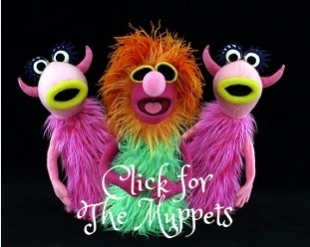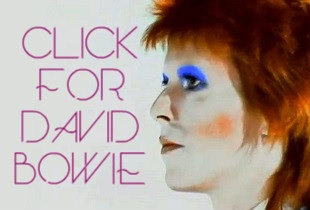Macca’s Beatles breakout: The making of Wings’ Band On The Run
Spotlighted: Paul and Linda McCartney and Denny Laine on the album cover with (l-r) Michael Parkinson, Kenny Lynch, James Coburn, Clement Freud, Christopher Lee and John Conteh
According to Alan Partridge, Wings were ‘the band The Beatles could have been’. Yes, it’s fair to say few have agreed with him over the years. However, like it or not, it’s indisputable that Paul McCartney’s post-Fabs pet project did manage to achieve both critical and mass success – once at least – with the 1973 super-smash album Band On The Run.
Earlier this month, this very album found itself on the hot-to-trot shelves in record stores once again, as it was re-issued in three swish, dynamic new versions. Punters could buy a 1-disc, 3-disc or even a 4-disc deluxe edition (replete with a 120-page hardback book of previously unseen photos from behind-the-scenes of the record). But is it necessary? Does this album really deserve such a fuss to be made of it, or indeed even to be re-released?
Well, I’m damned if I know – after all, it’s an album that’s hardly out of print in any case – but what I do know, and I’m sure of, is that Band On The Run is a fine album. Sure, I’m a big Beatles fan, but I will freely admit that, in general, Paul McCartney’s solo (and/ or Wings-produced) work wasn’t as good nor do I like it as much as John Lennon’s – or maybe even George Harrison’s – solo work. However, just to dismiss the former’s post-Fabs career entirely, as some rather cruel music critics down through the decades have, is not something I’ll do either. There’s surely golden nuggets to be found in there, namely the singles Another Day, Maybe I’m Amazed, My Love and Live And Let Die. And, for me, the Band On The Run album is one of those shining moments too.
We’re so street: Paul – with Linda and Denny – trying out the Macca charm on rather nonplussed-looking kids in downtown Lagos, but that’s the least of their troubles…
However, it did take Macca three long years to deliver this shining moment. Following the break-up of The Beatles in early 1970, McCartney and wife Linda (née Eastman) – a New York heiress and established photographer – upped sticks and moved their family, including Linda’s daughter Heather from her first marriage and the barely born Mary, to a farm on Scotland’s Mull of Kintyre. As he and his family lived an apparently idyllic existence, this period will always be remembered for Paul sporting a thick early post-Fabs beard, immortalised (as he cradles baby Mary in his coat) on the rear cover of his first solo album, McCartney. Far from well recalled nowadays, McCartney was actually a surefire hit; it was recorded while the finishing touches were applied to Let It Be and was released in March 1970, reaching #1 in America and #2 in the UK. Musically, however, it’s perhaps only truly memorable for the top song Maybe I’m Amazed, which was actually written a year before – and, oddly, its proper studio version has never been released as a single.
McCartney didn’t rest on his laurels, though, releasing two albums in 1971. The first, Ram, was written by Paul with input from Linda and came out in May. It wasn’t exactly critically acclaimed but, like McCartney, went down well with punters. The second, Wild Life, released in December, is perhaps more historically important as it was the first release of Macca’s new band Wings, officially formed the month before. Featuring Linda (most often on keyboards and delivering harmonies), former Moody Blues leader Denny Laine on lead guitar and Paul, well, doing everything else, Wings unfortunately didn’t get off to the most auspicious start, for Wild Life was pretty much ignored by the public and disappointed the critics.
Following this, and realising they needed to gel and get out and properly play, Paul, Linda and Denny decided to go on tour around the UK – but they went about it in a surprising, very back-to-basics manner. Packing up their lives, they – complete with kids (including new McCartney baby Stella) – drove around the country, going from gig to gig, in a van. And the venues they frequented were far from Shea Stadium; more like student unions. Indeed, so limited had Wings’ output been so far, they tended to repeat two or three songs each set. Still, the touring served its purpose – they became a tighter band and had earned a level of respect as a new three-piece that hadn’t attempted to jump the queue like some sort of supergroup, but had put the hours in reaching out to fans and converting others like any new band has to.
Still, the proof would always be in the pudding that was their studio releases and their chart placings, and the new-look Wings (for it now boasted the additions of guitarist Henry McCullough and drummer Denny Seiwell) didn’t leave the public and critics waiting long for their next offering, Red Rose Speedway, released in May 1973. Unlike the group’s first album, this one went down well with the punters, peaking at #1 in both the US and Australia and at #5 in the UK. Indeed, featured on it too was the deep, rich, imperious My Love (predictably, Paul was inspired by Linda when writing it), which deservedly topped the charts in the States. All the same, Red Rose Speedway left the critics cold – perhaps the band should have included on it the thrilling theme song they produced for the 1973 Bond film Live And Let Die, which they recorded during the album’s sessions? This single, after all, proved their first critical success, reached #2 on the US charts and was nominated for an Oscar. Either way, Paul & co. didn’t pause to ponder on it.
Come September and the band were recording the next – their third – album. In Nigeria. Yes, that’s right, Nigeria. In hindsight, Macca’s decision to hop down to Africa to record the latest album of his fledgling group may seem a little odd, but it was always his intention to fly out somewhere exotic and record the thing outside the UK. Why? His idea was to soak up some non-British culture and customs that might find their way on to the recording. On his list was the rather salubrious Barbados, but mostly because of the uniqueness of the notion, he plumped for Lagos, Nigeria’s capital. Unfortunately, however, the entirety of the band wasn’t exactly down with his decision and a day before they were due to set out, both McCullough and Seiwell pulled out of the trip, leaving McCartney, his wife and Laine to fly out on their own and, yes, record the whole album as a three-piece only. Which also meant that, adequate drummer though he was, Paul would now have to play drums on every track.
Unprepared for this and, understandably, hurt by this slight, the trio now had a challenge on their hands, but this challenge was only to be increased by two significant factors. The first was their discovery that the EMI recording studio in Lagos they were to use was rather more basic than had been expected – McCartney had to suggest to studio assistants Innocent and Monday (two names he has claimed he relished saying) setting up individual recording booths within the studio, as if this were a new concept to the world of music. And the second was that, just days into their trip, Paul and Linda had the album’s demo tapes stolen when they were held up one night, ensuring the band now had to record the whole thing from memory. Not exactly very easy.
“[Band On The Run is] the finest record yet released by any of the four musicians who were once called The Beatles.” ~ John Landau, music critic for Rolling Stone
In spite of these setbacks, though – and, who knows, in some ways maybe because of them – they managed to hit their new album out of the ballpark. Released in early December in both the UK and the US after overdubs work was completed in London, the eponymous Band On The Run (named after its opening number) proved a knockout with the critics and, after a slow start, with the public too. On three separate occasions it hit the top spot in the US album charts, going platinum in the process. Over here, it rose to #1 on the album charts as well and remained there for seven weeks during the summer, ending up the best selling record of 1974.
Indeed, a fair amount of the album’s success with the great unwashed is probably attributable to the popularity of its two singles. The first released off the album was its second tune, Jet (see video above). An explosion of melody, guitar, keyboard and brass, Jet is the perfect exponent of Wings at their best. It’s an infectious tune that finely fits with the Glam Rock era in which it was recorded, but also stands up as a damn good listen on its own – playwright and critic Graham Reid has described it as a ‘power-pop gem’. It also features truly nonsensical lyrics (not for the first time for a McCartney recording, admittedly), with its narrative seeming to be about a woman’s desire to marry young and then the trouble this brings her; however, ‘her’ name Jet was actually derived from the McCartney farm’s pony of the same name. Released in February 1974, Jet reached #7 in both the UK and the US.
Going several chart positions better on its release five months later (#1 Stateside and #3 over here) was the album’s opener, Band On The Run (see video below). An all-time classic pop song, it’s actually made up of three distinct melodic parts, very much in the manner of The Beatles’ Happiness Is A Warm Gun – the first part soft and lilting, the second more soft-rock and the third a fully fledged rock-out. With its themes of going on the lamb and liberation, it was a conscious – if unsubtle and somewhat quaint – effort on McCartney’s part to tap into the feeling of anti-establishment escape prevalent in early ’70s youth culture. A little amusingly, it also features the line ‘If we ever get out of here’ that apparently Paul remembered being uttered by George Harrison during one of The Beatles’ infamous business meetings.
The rest of the album, admittedly, does well to live up to its two openers, but certainly has a good bash at it and, doubtless, features a hell of a lot of variety in doing so. The third tune Bluebird is a soft, likeable and harmony-laden ballad; Mrs Vandebilt is a harder, strong bass-line driven effort, memorable for its ‘ho, hey ho’ chant; Let Me Roll It is McCartney’s favourite song from the album, a bluesy effort featuring a Lennon-like vocal delivery, it’s dominated by a simple but very effective guitar riff; Mamunia is a lilting, ecological-themed ditty showered with African rhythms and No Words is another effective – very ’70s – love song. Helen Wheels (about the McCartneys’ Land Rover – ‘Hell On Wheels’) was included on the US version of the album, but not the UK’s.
The album’s final two compositions perhaps deserve deeper focus. Picasso’s Last Words (Drink To Me) owes its origins to a chance meeting between McCartney and actor Dustin Hoffman in Jamaica, while the former was holidaying there and the latter was filming the film Papillon with Steve McQueen there. Enjoying each other’s company, the two hung out for a few days, during which time Hoffman asked of the songwriter whether he could rustle up a tune about any subject – for instance one about painter Pablo Picasso’s last words ‘Drink to me’, as recorded in an article he’d just read in Time magazine. Macca said he’d give it a bash and the result, much to Dustin’s delight, was Band On The Run‘s penultimate song. To my taste, although an appealing melody, the number isn’t the band’s best, plagued by echoes of earlier songs on the album (Jet and Mrs Vandebilt), which are rather crowbarred into the thing.
However, for me, the album’s last number Nineteen Hundred And Eighty-Five is an undoubted triumph (see video at end of article). Reaching a rousing climax at its end, it’s a fatalistic, end-of-the-world, lovers-destined-to-be-together sort of tune driven brilliantly along by an irresistible piano line and percussion, while featuring rocking guitar work and Live And Let Die-style brass. It makes for more than a fitting finale to proceedings and, in recognition of its quality and its popularity among his fans, McCartney recently and rightfully added it to his tour set list.
Midas touch: Wings taking flight as they receive Gold Discs for Band On The Run’s record sales
All in all then, Band On The Run quickly established itself as the most popular and successful album released by any of The Beatles following the quartet’s break-up, as well as (on a personal level) McCartney’s first, proper and obvious salvo to the critics that he could do it on his own away from his former bandmates – and with songs he’d written on his own and after The Fabs’ untimely demise. Indeed, in addition to selling around seven million copies worldwide and charming the critics, the album went on to win two Grammys in 1975 (Best Pop Vocal Performance By A Group and Best Harmonies).
And yet, despite all of that, that’s not the end of the story. After all, who could forget maybe Band On The Run‘s most enduring hallmark? Yes, that album cover. As we all know, many of the best ideas are the simple ones and, having the band and a few celebs promoting an album with the title it has by being photographed as if caught in a spotlight after escaping from stir, has to rather nicely be up there with best of them. The brainchild of London-based photographer Clive Arrowsmith (who, among other things, directed the iconic Two Tribes video for Frankie Goes To Hollywood), the image was captured against a stable wall in Osterly Park, Hounslow, and rather wonderfully featured a random collection of famous ’70s faces in addition to those of Paul, Linda and Denny.
The additional ‘bandmates’ number famed screen actor Christopher Lee; the British institution that is chatshow host Michael Parkinson; Hollywood legend James Coburn; former Liberal MP, gourmet and grandson of Sigmund Freud, Clement Freud; comedian Kenny Lynch, who shared the bill with The Beatles at a number of their early performances, and Liverpool boxer and World Light-Heavyweight Champion-to-be John Conteh, whose fights Macca and his wife often attended. But why on earth did the photo feature this rag-tag – if rather impressive – bunch? Well, according to Paul, these were the only peeps whose numbers he had in his phonebook and were in the UK at the time. Go figure, I suppose.
Still, to my mind, the off-kilter and fantastical touch their presence brings to the cover somehow fits and even enhances the album’s opening track with its appealing ‘storybook’-style tale of that ‘band on the run’. And, methinks, that’s very worthwhile. Plus, of course, it makes for a damn good album cover, something with which I’m sure Alan Partridge would agree.
~~~
For more on and to purchase the three new re-issued versions of Band On The Run, go to http://www.paulmccartney.com/bandontherun
~~~
























Wings was originally a quartet: Paul, Linda, Denny Laine, and Denny Seiwell (drums). They soon became a quintet with the addition of lead guitarist Henry McCullough. It wasn’t until McCartney planned to record BOTR in Lagos, and Seiwell and McCullough both left, that Wings was reduced to a trio.